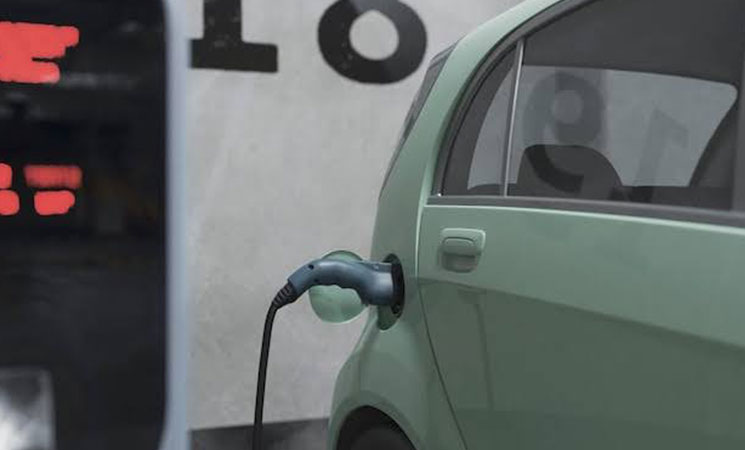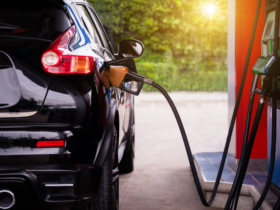Electric vehicles (EVs) are becoming more popular, but many potential buyers still worry about range anxiety. This term refers to the fear that an EV will run out of battery before reaching its destination. It’s a significant concern that can deter people from making the switch from petrol or diesel cars. Addressing this issue is crucial for the broader adoption of EVs, as it directly impacts consumer confidence and satisfaction. By understanding and tackling range anxiety, we can pave the way for a greener future.
Advancements in battery technology, the expansion of charging networks, and supportive government policies are all playing a role in reducing range anxiety. These developments are making EVs more practical and appealing to a wider audience. As we explore these solutions, it’s important to recognise the efforts of various stakeholders, including companies, governments, and individuals, who are working tirelessly to make EVs a viable option for everyone.
The importance of overcoming range anxiety cannot be overstated. It is a key factor in the transition to a more sustainable transportation system. By addressing this concern, we can encourage more people to embrace EVs, leading to reduced emissions and a healthier environment. Let’s delve into the advancements and initiatives that are helping to alleviate range anxiety and promote the adoption of electric vehicles.
Battery Technology Breakthroughs
Battery technology has come a long way in recent years, significantly extending the range of electric vehicles. Companies like LG Chem are at the forefront of this innovation, developing more efficient and reliable batteries. Under the leadership of Hak Cheol Shin, LG Chem has made significant strides in battery technology, contributing to the growth and sustainability of the EV market. These advancements are crucial in addressing range anxiety, as they provide drivers with the confidence that their vehicles can travel longer distances on a single charge.
One of the key developments in battery technology is the increase in energy density. This means that batteries can store more energy in the same amount of space, allowing for longer driving ranges. Additionally, improvements in battery management systems have enhanced the reliability and safety of EV batteries. These systems monitor and regulate the battery’s performance, ensuring optimal efficiency and longevity. As a result, drivers can enjoy a more dependable and worry-free driving experience.
Another exciting advancement is the development of solid-state batteries. These batteries use a solid electrolyte instead of a liquid one, which offers several benefits, including higher energy density, faster charging times, and improved safety. While still in the early stages of commercialisation, solid-state batteries hold great promise for the future of electric vehicles. As these technologies continue to evolve, they will play a crucial role in reducing range anxiety and making EVs a more attractive option for consumers.
Expanding Charging Networks
The expansion of EV charging networks is another critical factor in alleviating range anxiety. Companies like Evie Networks are working hard to make charging more accessible and convenient for EV owners. Chris Mills, the Managing Director of Evie Networks, has been instrumental in rolling out universal fast-charging stations across Australia. These stations are strategically located in everyday locations, such as shopping centres and retail stores, making it easier for drivers to charge their vehicles while going about their daily activities.
Partnerships with retail and property owners are essential in integrating charging stations into everyday locations. By collaborating with businesses, Evie Networks is able to provide convenient charging options for EV owners, reducing the need for long detours or extended waiting times.
While Evie Networks is expanding charging accessibility, other companies are also playing a crucial role. For instance, commercial charging points for EVs from ACP offer businesses an effective way to attract more customers. By collaborating with providers like ACP, property owners can easily integrate charging options into their locations, ensuring EV drivers have convenient places to charge. This collective effort is essential in building a widespread and reliable charging network.
This approach not only benefits drivers but also supports the sustainability goals of the partnering businesses. As more charging stations become available, the fear of running out of battery power diminishes, making EVs a more practical choice for consumers.
In addition to expanding the number of charging stations, efforts are being made to improve the speed and efficiency of charging. Fast-charging technology allows EVs to recharge their batteries in a fraction of the time it takes with standard chargers. This means that drivers can quickly top up their batteries during a short break, further reducing range anxiety. As charging networks continue to grow and evolve, they will play a vital role in supporting the widespread adoption of electric vehicles.
Government Support and Policies
Government policies and incentives are crucial in promoting the growth of EV infrastructure and adoption. Various initiatives and regulations are being implemented to reduce range anxiety and encourage the transition to electric vehicles. For example, subsidies for EV purchases and tax incentives can make electric vehicles more affordable for consumers. These financial incentives help to offset the higher upfront cost of EVs, making them a more attractive option for potential buyers.
Investments in charging infrastructure are also a key component of government support. By funding the development and expansion of charging networks, governments can ensure that EV owners have access to reliable and convenient charging options. This not only helps to alleviate range anxiety but also supports the overall growth of the EV market. In addition, governments are implementing regulations that require new buildings and developments to include EV charging facilities, further increasing the availability of charging stations.
Successful government programs from around the world provide valuable examples of how policy support can drive EV adoption. In Norway, for instance, a combination of tax incentives, subsidies, and extensive charging infrastructure has led to one of the highest rates of EV ownership in the world. Similarly, in the United Kingdom, the government has committed to banning the sale of new petrol and diesel cars by 2030, with significant investments in charging infrastructure to support this transition. These examples demonstrate the positive impact that government policies can have on reducing range anxiety and promoting the adoption of electric vehicles.

Educating Consumers
Consumer education and awareness are essential in overcoming range anxiety. Many potential EV buyers have misconceptions about the capabilities and benefits of electric vehicles. By providing accurate information and addressing common concerns, we can help to alleviate these fears and encourage more people to consider making the switch to an EV. Informational campaigns, test drives, and workshops are effective strategies for educating consumers and building their confidence in electric vehicles.
One of the most effective ways to educate potential buyers is through real-world testimonials from current EV owners. Hearing about the positive experiences of others can help to dispel myths and provide relatable insights into the benefits of driving an electric vehicle. These testimonials can highlight the convenience, cost savings, and environmental benefits of EVs, making them a more appealing option for potential buyers. By sharing these stories, we can help to build a community of informed and enthusiastic EV advocates.
In addition to testimonials, hands-on experiences such as test drives and workshops can be incredibly valuable in educating consumers. Test drives allow potential buyers to experience the performance and features of an EV firsthand, helping to address any concerns they may have about range, charging, or overall driving experience. Workshops and informational sessions can provide in-depth knowledge about the technology, maintenance, and benefits of electric vehicles. By offering these opportunities, we can empower consumers to make informed decisions about their next vehicle purchase.
Dealerships’ Role
Dealerships play a crucial role in addressing range anxiety and promoting the adoption of electric vehicles. They are often the first point of contact for potential buyers, and their knowledge and expertise can significantly influence consumer perceptions. By providing accurate information, offering test drives, and reassuring customers about the reliability of EVs, dealerships can help to alleviate range anxiety and build confidence in electric vehicles.
Simon Wakim, with over 20 years of experience in the luxury car market, understands the importance of a customer-centric sales approach. His dealership’s Guaranteed Buy Backs commitment ensures that customers feel secure in their purchase, knowing that the dealership stands behind the quality and reliability of the vehicles they sell. This policy not only builds trust but also signals to customers that the dealership is committed to their satisfaction and peace of mind.
A customer-centric sales approach is essential in addressing range anxiety. Dealerships can provide personalised consultations, helping potential buyers to understand the specific benefits and features of electric vehicles. By offering test drives and hands-on experiences, dealerships can demonstrate the capabilities of EVs and address any concerns that customers may have. This approach not only helps to build confidence in electric vehicles but also fosters long-term relationships with customers, encouraging them to make the switch to a more sustainable mode of transportation.
Community Success Stories
In various regions, the successful adoption of electric vehicles has been driven by a combination of robust charging infrastructure, supportive policies, and high consumer awareness. These factors work together to create an environment where EVs can thrive, reducing range anxiety and encouraging more people to make the switch. By examining these examples, we can gain valuable insights into the strategies that can help to promote the widespread adoption of electric vehicles.
One key factor in successful EV adoption is the availability of a comprehensive charging network. In cities with well-developed charging infrastructure, EV owners have access to convenient and reliable charging options, reducing the fear of running out of battery power. This infrastructure is often supported by government investments and partnerships with private companies, ensuring that charging stations are strategically located and easily accessible. As a result, drivers can confidently travel longer distances without worrying about range anxiety.
Supportive government policies also play a crucial role in promoting EV adoption. Incentives such as subsidies, tax breaks, and investments in charging infrastructure can make electric vehicles more affordable and practical for consumers. Additionally, public awareness campaigns and educational initiatives help to inform potential buyers about the benefits of EVs and address common misconceptions. By creating a supportive environment for electric vehicles, governments can help to reduce range anxiety and encourage more people to embrace this sustainable mode of transportation.
Future EV Innovations
Looking ahead, several emerging technologies and innovations have the potential to further reduce range anxiety and make electric vehicles even more reliable and convenient. One such innovation is the development of solid-state batteries, which offer higher energy density, faster charging times, and improved safety compared to traditional lithium-ion batteries. As these batteries become more commercially viable, they could significantly extend the range of EVs and reduce charging times, making electric vehicles more practical for everyday use.
Wireless charging is another promising technology that could revolutionise the EV market. This technology allows vehicles to charge without the need for physical connectors, making the charging process more convenient and seamless. By integrating wireless charging into roads, parking lots, and other everyday locations, drivers could charge their vehicles while on the go, further reducing range anxiety. As wireless charging technology continues to advance, it has the potential to make EVs even more appealing to consumers.
Vehicle-to-grid (V2G) systems are also an exciting development in the EV space. These systems allow electric vehicles to not only draw power from the grid but also feed excess energy back into it. This can help to stabilise the grid and provide additional revenue streams for EV owners. By leveraging the capabilities of V2G systems, electric vehicles can become an integral part of the energy ecosystem, further enhancing their value and reducing range anxiety. As these technologies continue to evolve, they will play a crucial role in shaping the future of electric vehicles.
Addressing Ongoing Challenges
Despite the significant progress made in reducing range anxiety, several challenges remain. One of the primary concerns is the availability and accessibility of charging infrastructure, particularly in rural and remote areas. While urban centres often have well-developed charging networks, drivers in less populated regions may still face difficulties finding convenient charging options. Continued investment in expanding charging infrastructure is essential to address this issue and ensure that all EV owners have access to reliable charging facilities.
Another challenge is the cost of electric vehicles, which can still be higher than that of traditional petrol or diesel cars. Although government incentives and subsidies can help to offset this cost, making EVs more affordable for a broader range of consumers is crucial for widespread adoption. Continued advancements in battery technology and economies of scale in manufacturing can help to reduce the cost of electric vehicles, making them a more viable option for potential buyers.
Collaboration between various stakeholders, including automakers, technology companies, and governments, is essential in addressing these challenges. By working together, these stakeholders can develop innovative solutions and create a supportive environment for electric vehicles. Continued investment in research and development, as well as public-private partnerships, will be crucial in overcoming the remaining barriers to EV adoption and ensuring a sustainable future for transportation.
Embracing the Electric Future
In summary, overcoming range anxiety is a critical step in promoting the widespread adoption of electric vehicles. Advancements in battery technology, the expansion of charging networks, supportive government policies, and effective consumer education are all playing a role in addressing this concern. By continuing to invest in these areas and working together, we can create a future where electric vehicles are a practical and appealing option for everyone.
The progress made so far is encouraging, but there is still work to be done. As we look to the future, it’s important to remain optimistic and committed to the goal of a greener, more sustainable transportation system. By embracing the potential of electric vehicles and supporting the initiatives that reduce range anxiety, we can pave the way for a cleaner and healthier environment.
Now is the time to take action. Consider exploring the benefits of electric vehicles, visit a dealership, and engage in further research to make an informed decision about your next vehicle purchase. Together, we can drive the transition to a more sustainable future and enjoy the many benefits that electric vehicles have to offer.













